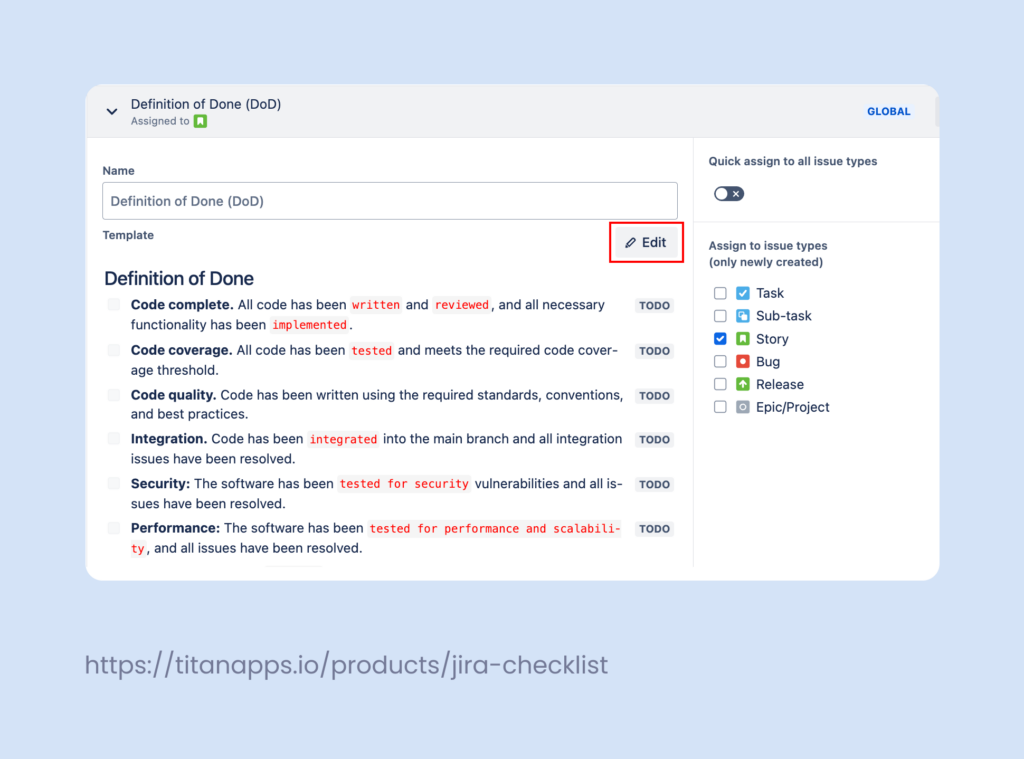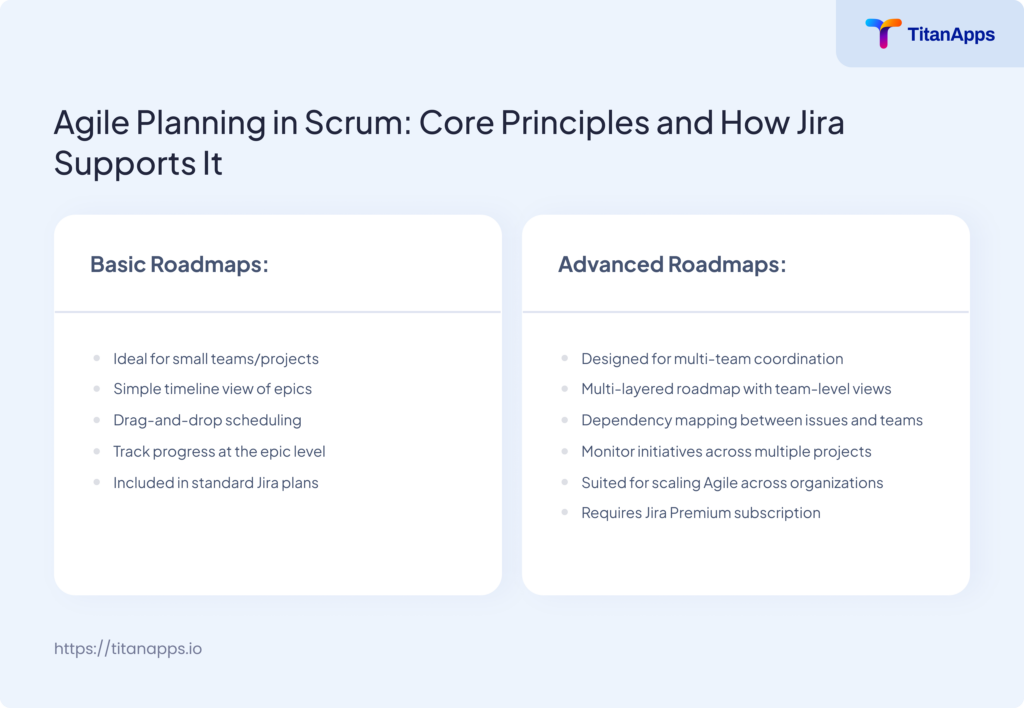Agile methodology emphasizes iterative development, team collaboration, and responsiveness to change. Within Agile, Scrum is a popular framework that organizes work into time-boxed sprints, with defined roles, ceremonies, and artifacts to support continuous delivery.
It helps teams organize, prioritize, and deliver work in short, focused cycles known as sprints or iterations. To make that possible at scale, you need tools that adapt with you. That’s where Jira comes in.
In this article, we’ll examine the key principles that shape Agile planning and how Jira supports each one through its tools, workflows, and real-world use cases.
Product backlog management
The product backlog is central to every Scrum team’s planning process. It is a dynamic list of work items constantly evolving based on customer feedback, technical insights, and business goals.
In Jira, the Backlog View provides a centralized space to manage this ever-changing list. Product owners and team members can drag and drop items to reprioritize them, assign issue types such as Epics or Stories, and utilize custom fields and filters to maintain organization.
This setup supports regular backlog refinement sessions, which are essential to Agile teams. You’re not just managing a to-do list—you’re shaping the roadmap for your next sprint and beyond.
Sprint planning and iteration workflow in Jira
Before any sprint begins, Agile teams gather for a planning session. This meeting helps the team define its commitment to the next iteration. The team estimates effort, understands dependencies, and agrees on a shared sprint goal.
Jira makes this process smoother with several purpose-built features:
- The Jira backlog view shows the product backlog alongside upcoming sprints, allowing teams to plan and move issues into the next sprint with a clear sense of scope.
- Teams can estimate work using story points, often based on techniques like the Fibonacci sequence.
- Teams can use Jira’s velocity charts and past sprint data to help forecast the amount of work they can take on in the next sprint.
- Fields for sprint goals and issue comments are often used to document objectives and align expectations across the team.
- Labels and components in Jira help categorize and group backlog items, making it easier to filter, search, and organize work before and during a sprint.
Jira also supports real-world team behaviors. For example, many teams loosely place backlog items into future sprints to understand what’s coming. Jira’s Future Sprint Creation and story allocation features make that easy. It’s not about planning everything, but staying ahead without losing flexibility.
Teams can also use dependency mapping to surface blockers early. And since all this is tied into the same system, your sprint plan connects cleanly with releases, roadmaps, and team capacity.
To simplify sprint planning even more, consider integrating Smart Checklist for Jira. This tool allows teams to directly break down complex tasks into actionable checklists within Jira issues.

For example, teams can embed Definition of Done (DoD) criteria, QA steps, or acceptance checklists into user stories and subtasks. During sprint execution, this makes it easier to track granular task progress, enforce consistency, and reduce miscommunication.
Smart Checklist can be reused as a template across similar issue types and even tied to automation rules, so recurring processes like onboarding or release prep follow a clear, repeatable structure. This also adds discipline to sprint delivery while saving time.
Product roadmap planning
While backlogs guide the day-to-day, roadmaps show the big picture. They help align the development team’s work with longer-term business goals and give stakeholders a sense of what’s coming.
Jira provides two roadmap tools tailored to different team sizes and planning needs.
- Timeline, a basic roadmap available in Jira, is great for visualizing epics and planning a single project timeline.
- Advanced Roadmaps, part of Jira Premium, support multi-project planning, dependency tracking, and scenario modeling.

With either version, you can mark major milestones, monitor timelines, and update priorities when things change, which is often true in Agile.
Release planning and delivery
The goal of every sprint is working software, but that’s not the same as a polished release. Release planning in Agile focuses on shipping incrementally, often in smaller chunks, without sacrificing stability.
In Jira, Fix Versions help teams group work into planned releases. Releases provide visibility into what is ready to go and what still requires attention. Teams can also set up automation rules that notify stakeholders, trigger builds, or mark issues done once a release is deployed.
If your team uses CI/CD tools like Bitbucket, GitHub, or Jenkins, Jira integrates with those too, making the handoff from planning to production smoother.
Why Jira excels at Agile project planning
There are plenty of project management tools out there. What sets Jira apart is how closely it aligns with Agile principles, especially for Scrum teams that work in sprints and focus on continuous delivery.
From early planning to real-time adjustments, Jira’s tools stay out of your way while still giving you control. You can manage user stories, track dependencies, prioritize work visually, and tie it all to business outcomes. And when you’re working across multiple teams or larger initiatives, Jira scales with you.
Whether you’re a product owner, Scrum Master, developer, or QA, Jira brings clarity and structure to your planning process without compromising agility.
Conclusion
Agile planning isn’t just about keeping tasks organized; it’s about helping teams make better decisions, adapt to change, and consistently deliver value.
Jira helps make that possible. From product backlog management to sprint planning, roadmap tracking, and release delivery, it brings the tools and visibility Agile teams need to stay on track.
If your team is already working in Agile or thinking about adopting it, Jira offers a solid starting point that can grow with you.
